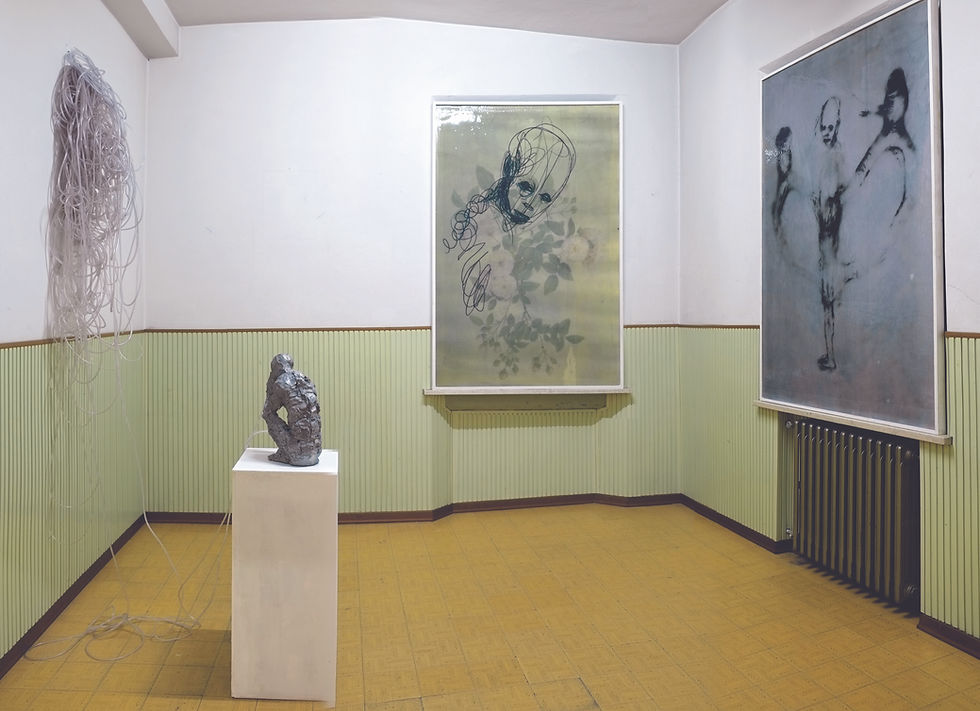tre idee per l'arte contemporanea
three ideas for contemporary art
Nel 1956, Octavio Paz pubblicò una raccolta di saggi sulla poesia intitolata "El arco y la lira" (L’arco e la lira). Uno dei capitoli più affascinanti è dedicato al ritmo, che Paz descrive come l'essenza primaria e imprescindibile della poesia, l’elemento che la distingue da altre forme di espressione verbale.
Paz esplora il concetto di ritmo contrapponendolo a quello di metro. Secondo lui, "metro e ritmo non sono la stessa cosa. Gli antichi retori sostenevano che il ritmo è padre del metro. Quando un metro si svuota di contenuto e diviene forma inerte, il ritmo continua a generare nuovi metri". Il metro è una misura senza senso intrinseco, mentre il ritmo è sempre carico di significato qualitativo e concreto. Il ritmo è l'anima vivente della poesia, in grado di trasformare e rinnovare il metro.
[...]
In 1956, Octavio Paz published a collection of essays on poetry entitled "El arco y la lira" (L'arco e la lira). One of the most fascinating chapters is dedicated to rhythm, which Paz describes as the primary and essential essence of poetry, the element that distinguishes it from other forms of verbal expression.
Paz explores the concept of rhythm as opposed to metro. According to him, "meter and rhythm are not the same thing. Ancient rhetoricians argued that rhythm is the father of the meter. When a meter empties of content and becomes inert form, the rhythm continues to generate new meters". The meter is an intrinsic meaningless measure, while the rhythm is always charged with qualitative and concrete meaning. Rhythm is the living soul of poetry, able to transform and renew the meter.
[...]

From the exhibition "Chiamata Collettiva" - artworks by Erich Turroni
Paz paragona il ritmo e il metro a due forze opposte ma complementari: il ritmo è lo slancio vitale, la connessione diretta con la vita e le percezioni; il metro è l'argine che dà forma e misura a questo flusso. Insieme, rappresentano i poli della creazione poetica.
Trasponendo questa dinamica alle arti visive, il ritmo diventa intensità e il metro diventa forma. L’intensità è la vibrazione sensibile di un’opera, il quantum di realtà che riflette. La forma, come il metro, codifica storicamente e concretizza l'espressione artistica.
Paz sottolinea che l’arte si compie nell’integrazione armoniosa di forma e intensità, raggiungibile solo attraverso un esercizio ripetuto e una disciplina interiore. È l’impegno costante dell’artista a rendere possibile l'unione tra intensità e forma, senza la quale l’opera d’arte non potrebbe esistere.
[...]
Paz compares rhythm and the meter to two opposing but complementary forces: rhythm is the vital momentum, the direct connection with life and perceptions; the meter is the embankment that shapes and measures this flow. Together, they represent the poles of poetic creation.
Transposing this dynamic to the visual arts, rhythm becomes intensity and the meter becomes form. Intensity is the sensitive vibration of a work, the quantum of reality reflecting. Form, like the meter, historically codifies and concretizes artistic expression.
Paz emphasizes that art is accomplished in the harmonious integration of form and intensity, attainable only through repeated exercise and inner discipline. It is the artist’s constant commitment to make possible the union between intensity and form, without which the work of art could not exist.
[...]

From the exhibition "Chiamata Collettiva" - artworks by Morena Chiodi
Abbiamo un’opera d’arte quando l’integrazione di forma e intensità è compiuta. E questo compimento può darsi solo nel solco di un esercizio ripetuto, di una lunga fedeltà a una visione, nell’assiduità di una disciplina interiore. È esattamente a questo punto che entra in scena la responsabilità del singolo, la facoltà volitiva ed esecutiva dell’artista: senza questa pratica, questa ostinata decisione, di cui l’opera in ultima istanza non è che la memoria distaccata, l’intreccio dei due termini sarebbe impossibile.
Intensità forma esercizio: la giustizia di ciascun passaggio si completa nella circolarità dell’insieme, come in un mantra.
[...]
We have a work of art when the integration of form and intensity is accomplished. And this fulfillment can be only in the wake of a repeated exercise, of a long fidelity to a vision, in the assiduity of an inner discipline. It is precisely at this point that the responsibility of the individual enters the stage, the artist’s volitional and executive faculty: without this practice, this obstinate decision, of which the work in the last instance is only the detached memory, the interweaving of the two terms would be impossible.
Intensity form exercise: the justice of each step is completed in the circularity of the whole, as in a mantra.
[...]
Roberta Bertozzi
Chiamata Colletiva ⎢ Call Collective
excerpt from the critical text by Roberta Bertozzi
from the exhibition held at Palazzo Don Baronio di Savignano
Artworks by Valentina Accardi, Giovanna Caimmi, Gilberto Giovagnoli, Giacomo Cossio, Paolo Buzzi, Verter Turroni, Erich Turroni, Denis Riva, Mirco Tarsi, Morena Chiodi, Stefano Ronconi, Mattia Vernocchi, Luca Piovaccari
IG roberta_artview ↗︎

Komentáře